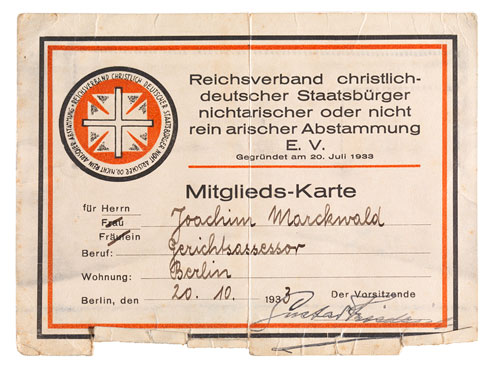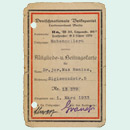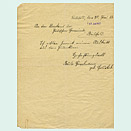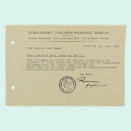Friday
20 October 1933
Joachim Marckwald‘s membership card, "Reich Union of Christian German Citizens of Non-Aryan or Not Purely Aryan Descent"
When the association‘s founding members met at a Berlin hotel on 20 July 1933, the name they chose and later entered in the register of associations was a cumbersome one: the "Reich Union of Christian German Citizens of Non-Aryan or Not Purely Aryan Descent" (Reichsverband christlich-deutscher Staatsbürger nichtarischer oder nicht rein arischer Abstammung e.V.). The title was intended to express on the one hand the Christian and nationalist outlook of the members, and on the other the association‘s role as a self-help organization for Christians persecuted due to racial antisemitism.
The choice of name was not an uncontroversial one. In particular, some members objected to the "negation 'non-Aryan,' which we find so painful." In July 1934, the executive committee collected suggestions for an alternative. The Gestapo also seems to have pressed for a name change, because it disapproved of linking the word "German" with the word "non-Aryan." From fall 1934, the association was called the "Reich Union of Non-Aryan Christians" (Reichsverband der nichtarischen Christen).
From the beginning, the association tried hard to prove its political reliability. Its membership cards were printed in the Reich colors of black, white, and red. The logo showed two juxtaposed crosses: a Christian cross and a cross pattée, which had been used by the Knights Templar during the Crusades and was the model for the Iron Cross decoration first awarded in 1813. To qualify for membership, an applicant had to "stand on the soil of national Germany," be older than eighteen, belong to "a Christian religious community," and be of Jewish or partially Jewish origin. No exact membership numbers are available, but they can be estimated based on the circulation of the association‘s newsletter: in 1935 the Reich Union was probably representing the interests of around 7,000 to 10,000 people.
One of them was the thirty-one-year-old lawyer Joachim Marckwald (1902–1986). His parents converted before their marriage and had both their sons baptized in the Protestant faith as babies. When the Nazis came to power, Marckwald was classified as a "non-Aryan" and excluded from his profession as an assistant judge. He quickly took on responsibility within the Union, and in late fall 1933 joined its eight-person board. There, his tasks included giving members legal advice and dealing with questions related to emigration. In 1936 he emigrated himself. Together with his wife and his father, he went to Brazil and settled in the city of Rolândia.
Jörg Waßmer



